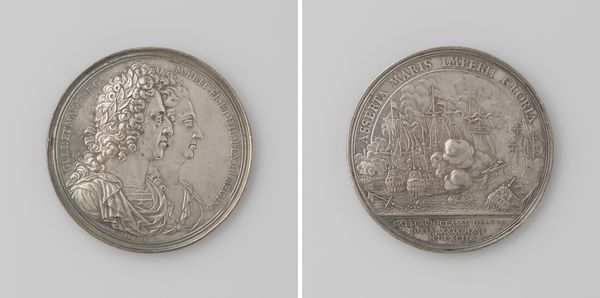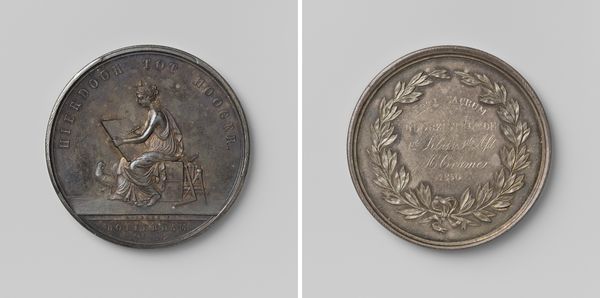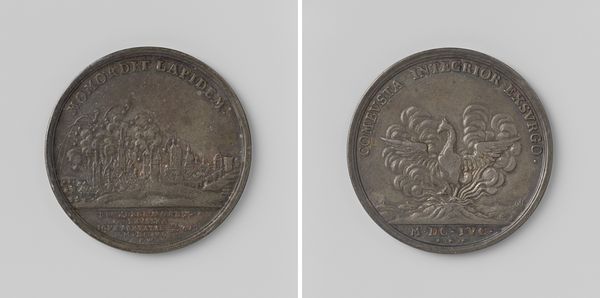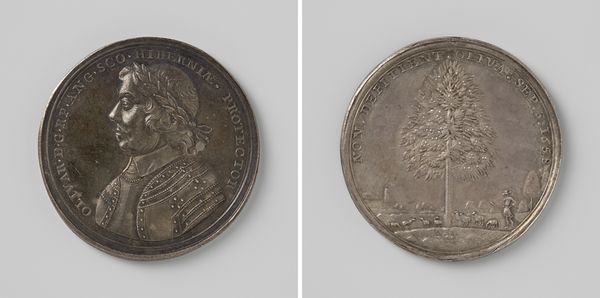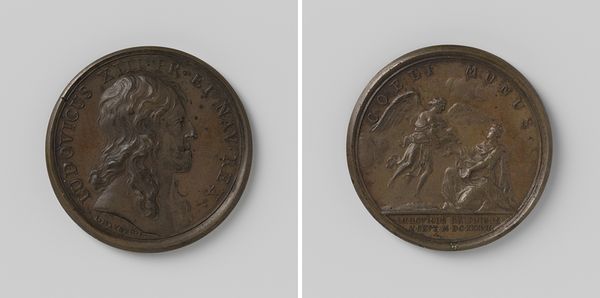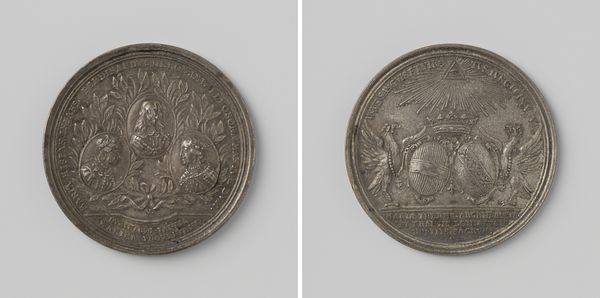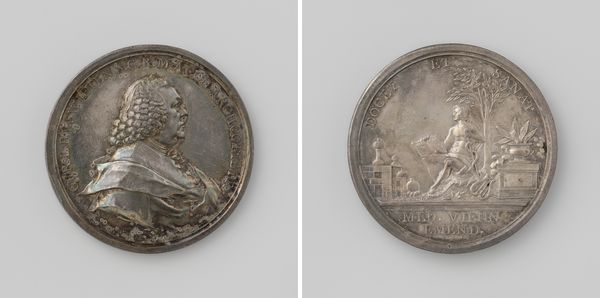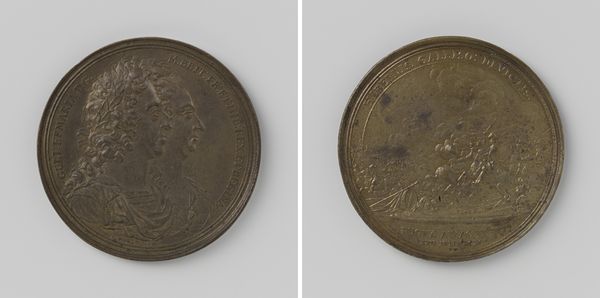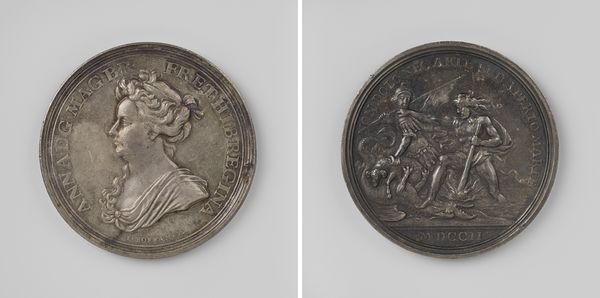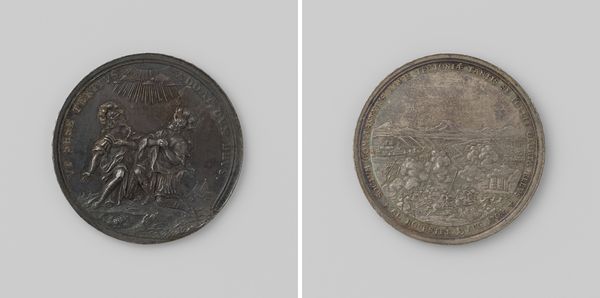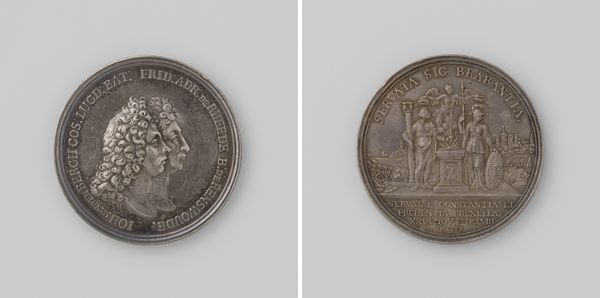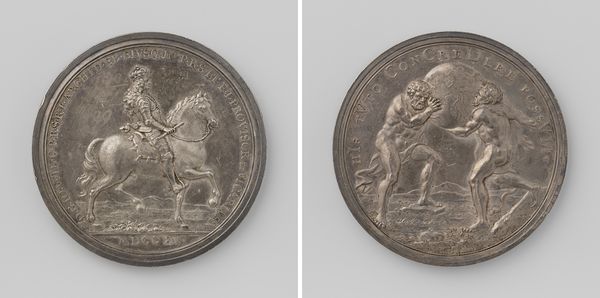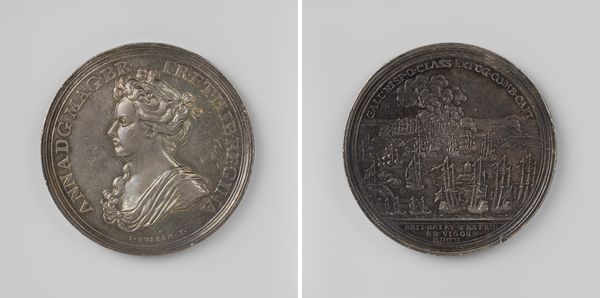
Zeeslag bij Kaap La Hogue, de Fransen verslagen door de vloot van Engeland en Holland 1692
0:00
0:00
anonymous
Rijksmuseum
metal, relief, engraving
#
narrative-art
#
baroque
#
metal
#
sculpture
#
relief
#
history-painting
#
engraving
Dimensions: diameter 4.9 cm, weight 47.20 gr
Copyright: Rijks Museum: Open Domain
This silver medal commemorates the Battle of La Hogue, where the English and Dutch navies defeated the French. Though the maker is unknown, the die-stamping process used to make it speaks volumes. Consider how the crispness of the design – Neptune, the sea god, riding triumphantly over defeated ships – is only possible through the precise application of force. A hardened steel die, engraved with the image in reverse, would have been pressed onto the silver blank, transferring the design in an instant. This industrial process, which emerged during the early modern period, allowed for the mass production of commemorative objects like this one. The medal’s inherent qualities of substance, texture, weight, color and form convey a sense of power and permanence, mirroring the Dutch Republic’s ambition to project itself as a major player on the European stage. The fact that it was made through industrial means only reinforces this message. Understanding how things are made opens up a whole new way of interpreting them, challenging traditional distinctions between art and craft.
Comments
No comments
Be the first to comment and join the conversation on the ultimate creative platform.
